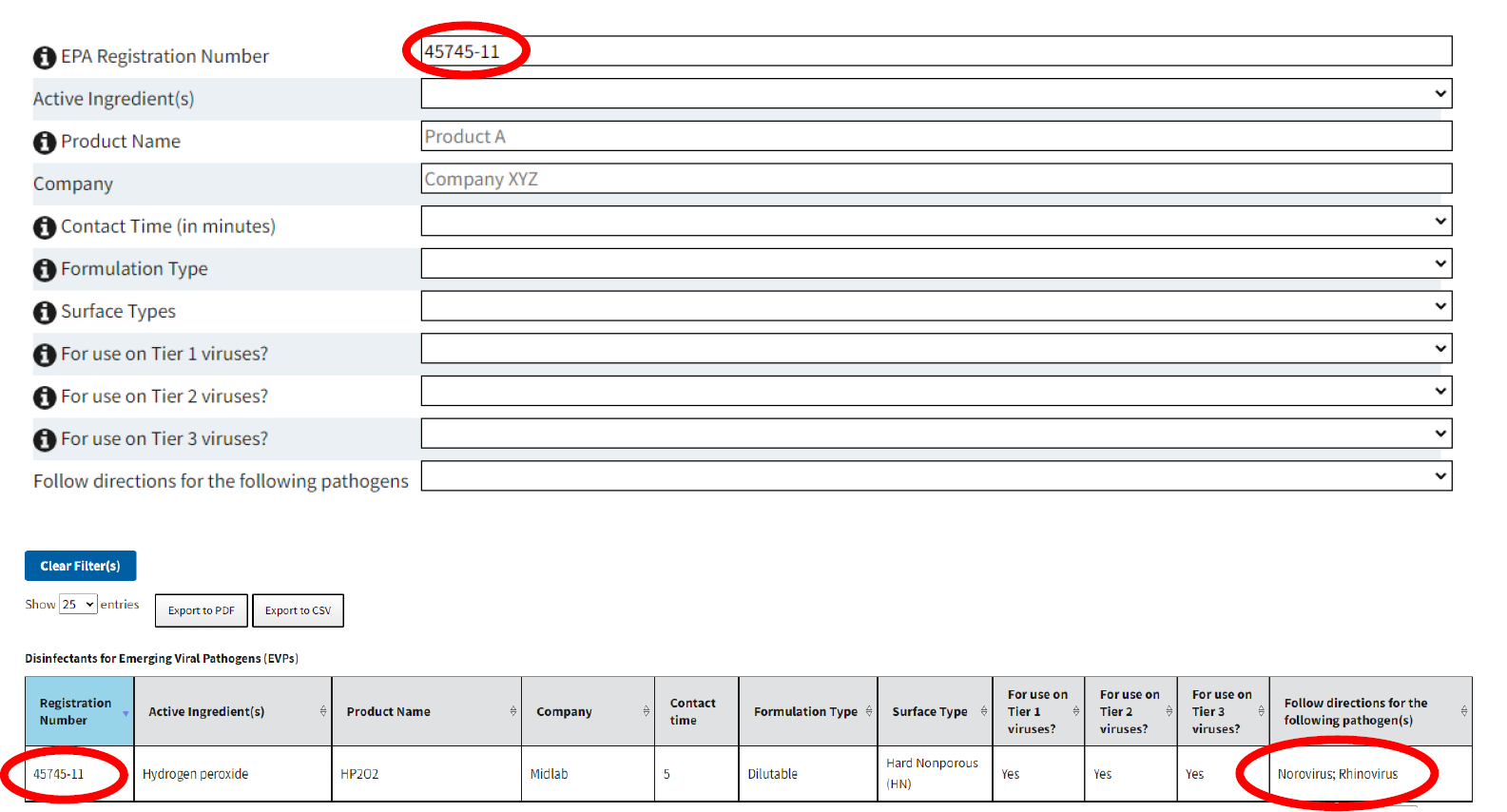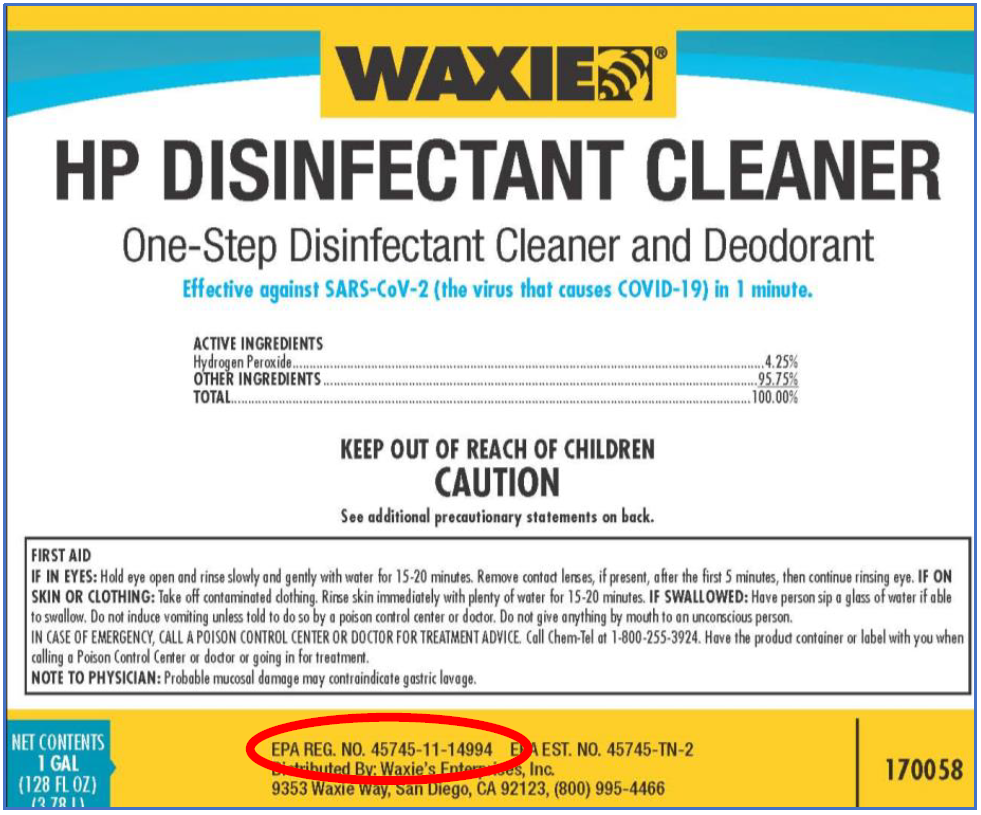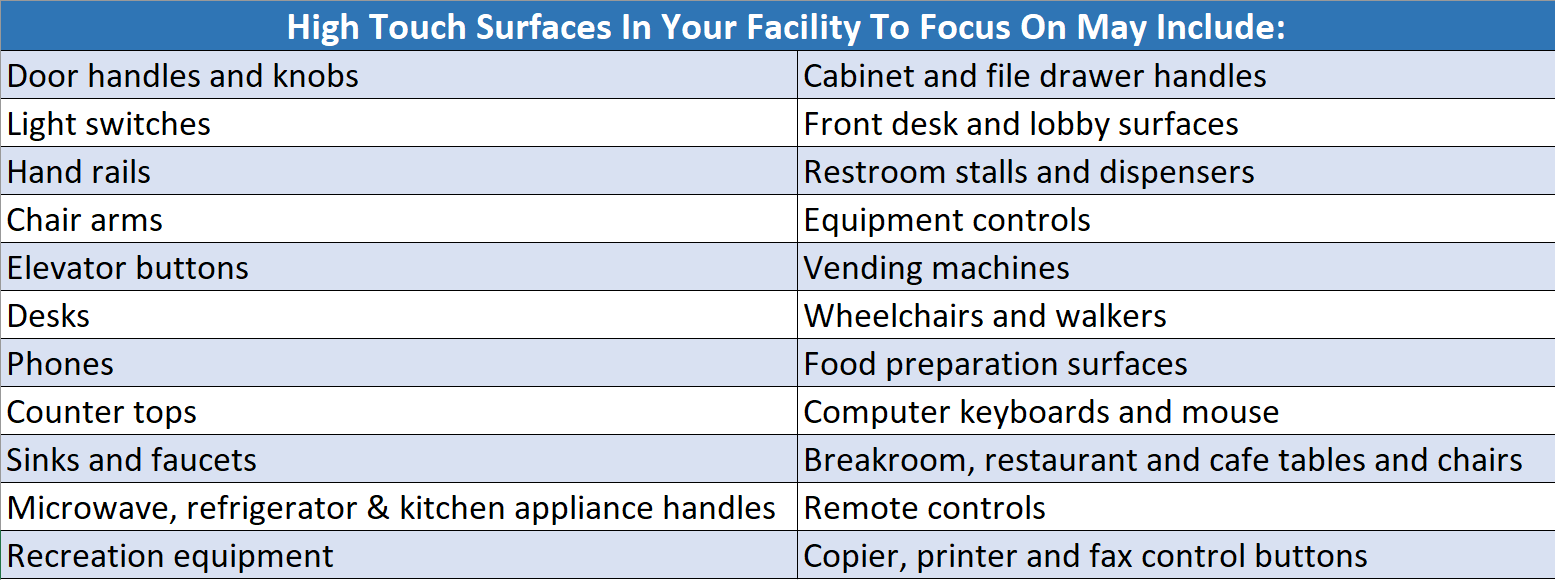By: Keith Schneringer | August 8, 2022
To wrap up this three-part blog series we will be walking you through identifying disinfectants that can inactivate the hMPXV virus and disinfecting best practices to keep your facility safe against the hMPXV virus. In our previous two blogs we provided a hMPXV overview that includes important info relating to infection prevention protocols, history, symptoms, transmission, prevention, and effective infection control strategies.
- What We Know About the hMPXV Virus (aka "monkeypox") Part I
- What We Know About the hMPXV Virus (aka "monkeypox") Part II
Confirming A Disinfectant Product Is On EPA List Q
Just to reiterate, at this time there is not a product which can make a specific claim to be effective against the hMPXV virus. However, as referenced before the EPA has published a list of disinfectants, also known as List Q: Disinfectants for Emerging Viral Pathogens (EVPs), which meet the EPA’s criteria for use against rare or novel viruses which can potentially cause outbreaks (such as the hMPXV virus).
This List Q can be a helpful resource to identify disinfectant products which can be used as part of a cleaning and disinfecting regimen to combat the hMPXV virus, as well as other future emerging pathogens.
However, if the list on the EPA website is searched using the product name only (for example “WAXIE HP Disinfectant Cleaner” or even just “WAXIE Disinfectant”), it may appear that the WAXIE disinfectant product you are looking for is not included on this list. This circumstance can be a potential source of confusion and alarm, but please be aware that the easiest way to find a product on the list is to enter the first two sets of its EPA registration number in the search bar on the webpage in order to confirm whether or not a specific disinfectant is in fact on the list.
The EPA has provided the following guidance for consumers searching for disinfectant products on List Q:
- Disinfectant products may be marketed and sold under different brand and product names
- You can use the list (on the EPA website) to determine whether a disinfectant product is registered for use against EVPs using the products registration number
- First, find the registration number on the product label – look for “EPA Reg. No.” followed by two or three sets of numbers
- If your product’s registration number has two parts (ex. 1234-12), it has a primary registration number – If this number is on List Q, the product is qualified for use against EVPs
- If your product’s registration number has three parts (ex. 1234-12-123), you have a supplemental distributor product – these products have the exact same chemical composition and efficacy as primary products, but often have different brand names – just remember that if the first two parts of this registration number (ex. 1234-12) are on List Q, then the product is qualified for use against EVPs (and know that the first two parts of this registration number reflect the primary registration, while the third part identified the distributor’s EPA company number)
- Regardless of whether you are using a primary registration product or a supplemental registration product, always check that the product’s label includes directions for use for the pathogen on List Q
For example, the EPA Reg. No. for WAXIE HP Disinfectant Cleaner is “45745-11-14994”.
Please note that the first number “45745” in the EPA registration number is a reference to the company which provides the active ingredient used to make the disinfectant – in this case the active ingredient is “hydrogen peroxide”, and the company which makes this ingredient is “Midlab”.
The second number “11” is a reference to the specific product formula which is made using these raw materials – in this case, the reference is to a formula Midlab calls “HP2O2”.
And the third number “14994” is a reference to the supplemental registration holder – in this case, and for the case of all of the other WAXIE Brand disinfectant products, the reference is to WAXIE’s EPA company number.
Searching For A Disinfectant Product on EPA List Q Website
Please see images below taken from the EPA website displaying the search result for WAXIE HP Disinfectant Cleaner using the EPA Reg. No. “45745-11”, which is the first two sets of numbers in the EPA Reg. No. for this particular WAXIE brand disinfectant product (45745-11-14994). 
Images: EPA Website, List Q, Search for WAXIE HP Disinfectant Cleaner
Other helpful information which is also provided on the EPA List Q website is guidance on what directions to follow when using the referenced disinfectant product to inactivate the hMPXV virus.
For example, for the WAXIE HP Disinfectant Cleaner displayed in the search results above, the applicable directions to use when trying to inactivate the hMPXV virus would be the same directions on the master disinfectant label used to kill “Norovirus” or “Rhinovirus”, with a recommended contact time for the disinfectant solution of “5 minutes”.
Reading A WAXIE Brand Disinfectant Product Label
To view this EPA registration number information on the WAXIE product label, please see the example below for WAXIE HP Disinfectant Cleaner:
Image: WAXIE HP Disinfectant Label. WAXIE Item #170058
Please note that the EPA registration number for each disinfectant product is referenced on every label and secondary label for WAXIE brand disinfectant products, and this information may also be found when searching for each product in the WAXIE Cleaning Solutions Catalog, as well as the WAXIE Online Catalog and the associated WAXIE Spec Sheets for each disinfectant.
Disinfecting Guidelines
When using a disinfectant, it is critical to make sure that the proper products have been selected for your building surfaces and anticipated soils, and that your custodial crew has been properly trained on the use of the chemicals, tools and equipment provided. Some helpful tips to consider include:
- Train your custodial staff: Disinfectants are designed to kill (they have toxic properties and are listed as pesticides), and as such care should be taken when determining the appropriate amount of disinfectant to use, and the appropriate surfaces on which to use it. Focus should be on applying disinfectant to potential high touch surfaces, and staff should be trained on proper dilution, application, recommended Personal Protective Equipment (PPE), surface rinsing, disinfectant chemical disposal and clean up as prescribed on the selected disinfectant label.
- Clean the surface first: Disinfectants primary purpose is to kill microorganisms, and as such they are typically not as good at cleaning surfaces as a general-purpose cleaning chemical. While there are some one-step cleaner/disinfectants available, it is necessary to use a general purpose or bioactive cleaner or degreaser to pre-clean heavily soiled areas ⏤ and it is helpful to note that using microfiber cleaning cloths and mops also assist to increase the efficacy of the cleaning chemical in removing soils on building surfaces. Cleaning equipment such as the WAXIE VERSA Cleaning Caddy are also extremely effective at removing soils from building surfaces prior to disinfecting.
- Select the appropriate disinfectant: There are a plethora of disinfectants on the market in a variety of different packages, and it is important to note the listed kill claims on your selected disinfectant so that you can be sure that the product will be effective for the specific circumstances and pathogens in your building. Also take note of compatibility of the disinfectant with your building surfaces some products are not intended for use on certain surfaces and may either damage surfaces or have decreased efficacy.
- Read the disinfectant label instructions: Once the appropriate disinfectant has been selected, follow the instructions listed on the label to ensure proper usage. If the product is a concentrate, make sure to dilute at the recommended amounts, and apply to surfaces as described, using recommended Personal Protective Equipment (PPE).
- Ensure that the disinfectant has enough surface contact dwell time: Depending on the specific disinfectant and desired pathogen kill, there will be a range of dwell time which will be needed to ensure that the surfaces have been effectively disinfected. Some contact times are as long as 10 minutes (although some are as short as 30 seconds to 1 minute), and it is imperative that the disinfectant solution remain wet and active on the surface for the prescribed amount of time in order to ensure that the targeted pathogens have been successfully eliminated.
Facility Surface Cleaning and Disinfecting
Once effective hand hygiene best practices have been implemented, and the appropriate disinfectant product for your facility has been identified, the next step to maintaining a clean and healthy building environment is through effective surface cleaning and disinfecting.
It is recommended that your custodial team evaluate and implement measures to minimize the potential transmission of viruses via hard surfaces through good sound cleaning and disinfecting procedures, with a focus on areas which may have the greatest likelihood of potential environmental contamination such as restrooms, food preparation areas, and high touch surfaces.
Your WAXIE Account Consultant is a great resource to help answer any additional questions you may have regarding surface disinfectants and other associated cleaning product solutions and hand hygiene.
WAXIE is committed to helping our customers keep their facilities cleaner, healthier, greener, and safer. That means creating customized cleaning solutions to meet your specific needs, and then providing the ongoing training and support to help you achieve a cleaner and healthier building environment with infection control resources.





